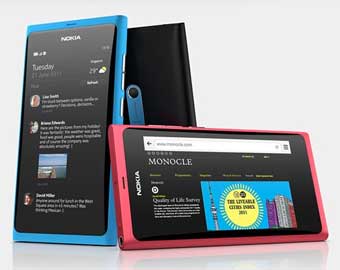While long suspected, the reasons for ex-CTO Rich Green’s departure from Nokia have this week become clear. The Finnish firm’s first and last Meego-based handset was released Tuesday, while the OS itself was formally executed with a view to what’s left being assimilated by the LiMo and Linux Foundations.
September 28, 2011

While long suspected, the reasons for ex-CTO Rich Green’s departure from Nokia have this week become clear. The Finnish firm’s first and last Meego-based handset was released Tuesday, while the OS itself was formally decomissioned with a view to what’s left being assimilated by the LiMo and Linux Foundations.
Meego was the Linux-based mobile software platform Nokia developed in conjunction with Intel, designed to go toe to toe with Android and iOS on top end smartphones. However, development of the platform moved too slowly for Nokia to benefit and when the firm offloaded Symbian to Accenture in favour of Windows Phone, Meego’s days were always numbered.
Former CTO Rich Green, who walked out over the summer, revealed last week he won’t be returning to work. Instead, he is immediately replaced by Henry Tirri, who previously headed up Nokia’s research facility. Green, who was seen as a champion of Meego, was only appointed CTO in May 2010, but took an extended leave of absence one year later after falling out with new president and CEO Stephen Elop over the Finnish firm’s tech strategy.
Then on Wednesday this week, Meego announced its intention to transition to something called Tizen – a Linux-based open source OS shaped by the LiMo and Linux Foundations and supported by Intel.
According to the blurb, Tizen is a standards-based, cross-architecture software platform, which supports multiple device categories including smartphones, tablets, smart TVs, netbooks and in-vehicle infotainment systems. The initial release of Tizen is targeted for the first quarter of 2012, with the first devices expected to come to market in mid-2012.
Tizen combines technologies from LiMo and the Linux Foundation and adds a standards-based HTML5 and WAC web development environment, which fits neatly with Meego’s HTML5-centric vision of the future.
It sounds like a noble proposition but it’s just a shame that Tizen seems to suffer from the “too many cooks” problem that dogs many open source initiatives, from the get-go. And all the time iOS, Android, which is a more tightly controlled Linux project, and soon Windows will be steaming ahead before Tizen is even off the blocks.
Somewhat ironically, Nokia’s long awaited N9 – the company’s first (and only) commercial Meego device – has just hit stores. It’s got all the hallmarks of a sleek and glossy smartphone: no hard buttons; three desktops; 3.9-inch AMOLED screen; NFC; 8-megapixel Carl Zeiss camera; Nokia Music; free turn-by-turn drive and walk navigation; 16GB and 64GB storage options; and a price tag of €480 or €560.
In terms of apps, Angry Birds and WiFi Hotspot are pre-installed and there is also integrated support for Facebook, Twitter, Mail for Exchange, Gmail, Skype, Picasa and Flickr. The rest of the N9 apps can be found in Ovi Store and Nokia assures us that Symbian applications written in Qt are relatively easy to port to the Nokia N9. The problem is with Symbian on a back burner and the Ovi store looking like its days are numbered, the future for the N9 looks bleak at best.
Read more about:
DiscussionAbout the Author(s)
You May Also Like








.png?width=300&auto=webp&quality=80&disable=upscale)


_1.jpg?width=300&auto=webp&quality=80&disable=upscale)


.png?width=800&auto=webp&quality=80&disable=upscale)